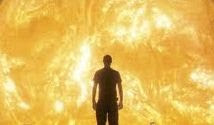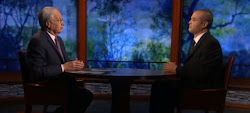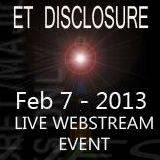Paste the link if you can't access the link/video.
http://www.newscientist.com/article/mg20527520.200-cosmic-clocks-relativitys-final-test.html?full=true
Don't be so quick to say that they're not ET in origin;
http://www.openseti.org/OSPulsars.html
Be Well.
David
Cosmic clocks: Relativity's final test
- 17 March 2010 by Richard Webb
 Sam Chivers)" title="Pulsars could give away the presence of gravitational waves (Image: Sam Chivers)">
Sam Chivers)" title="Pulsars could give away the presence of gravitational waves (Image: Sam Chivers)"> Pulsars could give away the presence of gravitational waves (Image: Sam Chivers)
Video: Pulsars test relativity
NIGHT in, night out, the rhythmic radio signals reach Earth. The slowest of them sound like a nail being hammered into wood, or a shoe being slapped against a post to rid it of mud. Others are more like a stuttering motor stopped at a traffic signal. Some make almost continuous tones, ripe to be combined into cosmic mood music.
Always the same signature tunes, always from the same points in the sky. Small wonder that when astronomers first heard them back in the 1960s, some thought they were messages from alien civilisations.
The signals aren't from ET, however; they are from pulsars. These extreme cosmic objects have been keeping us on our toes for over 40 years, and are poised for their greatest coup yet. Meticulous measurements of pulsars' timekeeping might just solve one of the biggest mysteries of modern physics: the whereabouts of gravitational waves.
The keystone of Einstein's general theory of relativity, gravitational waves are tiny ripples in the fabric of space-time. But they have proved frustratingly elusive, despite ever bigger and more expensive instruments being built to detect them. Pulsars could now pip these projects to the post - on a fraction of the budget. "We're already at the stage where we can start to rule out things," says George Hobbs of the Parkes Observatory in New South Wales, Australia, which is home to one of the pulsar-timing experiments. "We could make a detection next week," he says, depending on the nature of gravitational waves.
It was August 1967 when pulsars first made Earth contact. In a field on the outskirts of Cambridge, UK, graduate student Jocelyn Bell and her supervisor Antony Hewish were using a new antenna array to scan the sky for radio sources. Back then, astronomical observations were measured in miles - of paper. Mechanical pens traced radio signals onto long charts, and it was Bell's job to trawl through them.
In one chart, she spotted an odd bit of "scruff", as she described it: a train of pulses spaced 1.3 seconds apart. It did not fit with any astronomical phenomenon then known, and try as they might Bell and Hewish could find no explanation, natural or artificial. Stumped, they half-joked about who they should tell first that they had eavesdropped on little green men.
Relativity's predictions
By the time they published their findings the following year, the true culprit had been unmasked: a neutron star (Nature, vol 217, p 709). These extraordinarily dense bodies, left behind when a star many times the size of our sun explodes in a supernova, pack the mass of our sun and more into a sphere just tens of kilometres across. "It is like taking a sewing thimble and jamming the population of the world into it," says Bell, now Jocelyn Bell Burnell of the University of Oxford.
Besides being unusually dense, neutron stars also rotate rapidly and have huge magnetic fields. To turn a neutron star into a pulsar, its magnetic axis must be at an angle to its rotational axis. That way, the powerful jets of radiation erupting from the star's magnetic poles will sweep round as the star rotates, rather like the beam of a lighthouse. These jets are what regularly buzz our telescopes - although we still don't know exactly how they are formed (see "What makes a pulsar tick?").
The first pulsars to be discovered spin in a comparatively leisurely fashion, taking several seconds to complete one rotation. In 1982, however, a group led by Donald Backer of the University of California, Berkeley, upped the ante with a "millisecond" pulsar that whirls around a breathtaking 642 times a second, fuelled by matter and energy siphoned from a companion star.
The pulses of millisecond pulsars are so fast and regular that they make fantastic cosmic clocks, rivalling the accuracy of any man-made atomic timepiece. From there, it is just a small mental leap to using them to spy out gravitational waves.
According to Einstein's general theory of relativity, mass distorts space and time around it, creating the force we know as gravity. Not even massless light is immune to its embrace. General relativity's most outlandish predictions have been confirmed, including the existence of black holes and the bending of starlight by massive celestial objects. But one remains elusive. If two massive objects are in orbit around each other, relativity says their accelerations will cause transient distortions in space-time that ripple out into the cosmos - gravitational waves.
So far, we have only one piece of circumstantial evidence that such waves exist. It comes, fittingly enough, from a pulsar. In 1974, astronomers Russell Hulse and Joseph Taylor discovered one pulsar circling particularly tightly around a companion, completing one orbit every 8 hours. They saw the distance between the two bodies steadily diminish as they spiral in towards each other - exactly what Einstein had predicted should happen if they were losing energy by radiating gravitational waves.
Similar stellar two-steps have been going on throughout cosmic history, and have played a huge part in building today's universe. According to our best understanding of galaxy formation, small galaxies have collided and merged over time to forge bigger ones. Their central black holes must have merged too, to form the supermassive black holes present at the centre of most galaxies. As they did so, they should have whisked up the space around them, sending out gravitational waves that still persist today.
Even built up over eons, this rippling of space-time is tiny, and the peak and trough of a complete wave can take years to pass a point in space. Inordinate patience and a super-accurate detector are needed to see anything. The biggest detector built so far is the Laser Interferometer Gravitational-Wave Observatory (LIGO). Spread over two sites in Louisiana and Washington, it aims to nail gravitational waves by measuring changes in the time it takes a laser beam to zap up and down between mirrors set kilometres apart. So far it has seen precisely nothing.
This is where millisecond pulsars come in. Pulsars lie many light years from Earth, leaving plenty of intervening time and space for gravitational waves to gently stretch and compress, so altering the time it takes for their pulses to hit Earth. Theoretically, all you need to see the effect is a single, bright millisecond pulsar that you can time sufficiently accurately for a few years.
In practice, though, this effect is not large enough to be seen even with the brightest and best-timed pulsars. But there is a cunning workaround. As gravitational waves ripple out from their source, they stretch space-time in one direction and squeeze it at 90 degrees to this. Pulsar pulses reaching Earth that pass through a stretched area arrive unusually far apart, and those that pass through a squeezed area arrive closer together (see diagram).
If we map out millisecond pulsars in the sky and time their pulses for long enough to find out the average time it takes them to reach Earth, any variation in that time would indicate interference from gravitational waves. See a pattern of variation in many pulses, all fitting the expected stretch-squeeze template, and you've hit gold.
This is exactly what three projects are now searching for. First out of the starting blocks was the Parkes Pulsar Timing Array at the Parkes Observatory, which started work in 2005. It has been joined by NanoGrav, a North American collaboration that uses the world's most powerful radio telescopes at Arecibo in Puerto Rico and Green Bank in West Virginia. Completing the trio is the European Pulsar Timing Array (EPTA), which combines data from radio telescopes in Germany, the Netherlands, France, the Italian island of Sardinia and the UK.
"To see a gravitational wave signal from supermassive black holes, you need to time twenty millisecond pulsars to 100-nanosecond accuracy with observations every two weeks for five years," says Hobbs. His team at Parkes has been observing pulsars for long enough - unfortunately just not enough of the right kind of pulsar.
"The lack of good millisecond pulsars has been the biggest problem for all the pulsar-timing arrays," says Scott Ransom, a member of the NanoGrav team based at the National Radio Astronomy Observatory in Charlottesville, Virginia. Until recently, we only knew of about sixty millisecond pulsars in our galactic disc, and not all of them fit the bill for gravitational-wave hunting. Only half a dozen can be timed to 100-nanosecond accuracy, with many more at the 200-nanosecond to microsecond level.
Millisecond finds
Detecting gravitational waves using only these pulsars is still possible; it will just take longer. "More millisecond pulsars will make our detections stronger and come earlier," says Ransom. "We know they're out there, we just haven't found them yet."
Our luck is beginning to change, though. In June 2008, NASA launched the Fermi gamma-ray space telescope, a general-purpose telescope to map out sources of high-energy cosmic radiation. In January this year, the Fermi team announced that 17 new millisecond pulsars had popped up in just three months.
It could be the breakthrough pulsar-timing needs. Not all the new pulsars will be suitable - we already know that four are "black widow" pulsars, sucking mass from an unseen companion star. "That can lead to changes in the pulse arrival times as the radio waves interact with gas from the companion," says Ben Stappers, a member of EPTA. But with a few hundred unidentified Fermi sources still to be examined, a cornucopia of new millisecond pulsars is on the horizon.
One characteristic of the Fermi pulsars augurs well: they are pretty evenly spread across the sky, with many visible from the northern hemisphere. Compared with the southern sky, the northern sky has, until now, been a pulsar desert - a situation that astronomers had been attempting to rectify with the first ever all-sky northern hemisphere pulsar search.
Ultimately, however, the best and fastest results can only be achieved by pooling the finest of the pulsars from north and south into one super-array. This is in the pipeline, too, with the three pulsar projects agreeing to share measurements and eventually coordinate observing time across the globe.
So how long will it be before we have a definitive detection of gravitational waves? Hobbs's prediction of next week is, he admits, on the optimistic side. "But with the data we already have, it should be within five years," he says. That puts pulsar-timing in a neck-and-neck race with LIGO, which by 2015 will have undergone a crucial upgrade to increase its sensitivity. "It is all very exciting," says Bell Burnell. "I would say it is about evens at the moment as to whether a pulsar array or LIGO makes the first detection."
And if there is nothing there? Hobbs thinks this is the more interesting outcome. "If we find gravitational waves, everyone gets very excited and Einstein has another feather in his cap - but that's it," he says. If, on the other hand, gravitational waves do not exist, not only will general relativity need some significant revision, but our entire idea of how things came together in the cosmos will need a rethink. "We would have ruled out the whole hierarchical model of galaxy formation," says Hobbs. "We would be back to square one."
Either way, the clocks are now ticking.
What makes a pulsar tick?
We don't know why pulsars tick so regularly. The answer may lie in a paper presented in January to the American Astronomical Society meeting in Washington DC by John Singleton and Andrea Schmidt of the Los Alamos National Laboratory in New Mexico. They suggest the tick might be something akin to the sonic boom produced by supersonic aircraft as they accelerate past the speed of sound (arxiv.org/abs/0908.1349).
Relativity does not forbid the magnetic fields at the surface of a pulsar rotating faster than the speed of light, says Singleton. As they do so, his team suggests, particles of opposite charge are pushed to either side of the pulsar, where they emit radiation. The pattern of radiation is then sharpened by the superluminal boom of the magnetic field into a sharply defined pulse that is emitted into space. A similar effect shapes the sound waves emitted by an aircraft as it accelerates through the sound barrier. While the people inside hear a continuous rushing sound, the sound waves arrive at an observer on the ground as a single "boom" (arxiv.org/abs/0912.0350).
Singleton says his model can reproduce all the features of the radiation given out by a pulsar, replacing the hotchpotch of models needed before. That has got Jocelyn Bell Burnell, who discovered pulsars, interested. "They are explaining some features of pulsar emission that are difficult to explain, and very neatly," she says.
Other theorists are less impressed, but Singleton says that is to be expected. "If we're right - and I'm convinced we are - our model replaces 40 years of work that has employed hundreds of theorists. You would expect some hostility."
Richard Webb is a features editor at New Scientist





Thanks for sharing nice information with us. I really liked this part of the article, This is truly awesome article.
ReplyDeletecapture theory astronomy
marvelous sharing,
ReplyDeletecapture theory astronomy